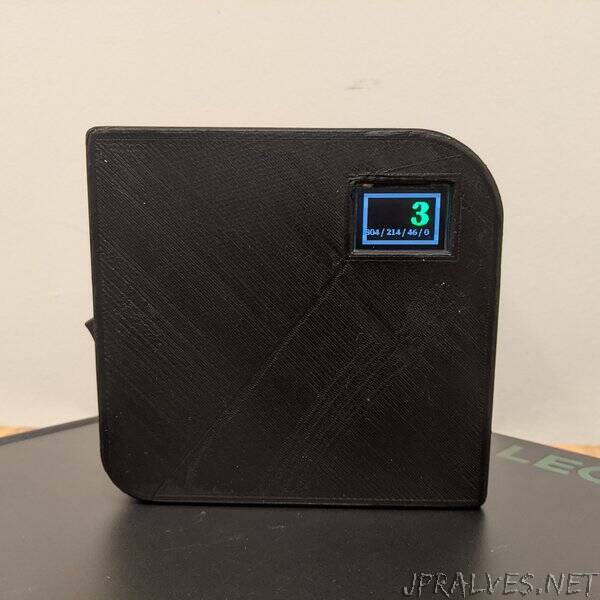
“Building an AQI sensor with off-the-shelf parts and 3D-printed case
After visiting Seattle this summer during the forest fires and being made aware of how important AQI is, I decided to build my own AQI device.
When going into this project, I was not 100% sure what I wanted, but after a few iterations of hardware combinations, I came to the following requirements:
1. Portable
2. Off-the-shelf components
3. 3D-printable case
4. Fast start time
Bill of material:
Adafruit Feather RP2040 (https://www.adafruit.com/product/4884)
PMS5003 PM2.5 Air Quality Sensor (https://www.adafruit.com/product/3686)
Lithium Battery (https://www.adafruit.com/product/1781)
Adafruit Powerboost 1000 Charger (https://www.adafruit.com/product/2465)
0.96” OLED Display (https://www.amazon.com/HiLetgo-Colorful-Display-SSD1331-Resolution/dp/B0711RKXB5)
On/Off Switch
Power Rail (snapped an end of a breadboard)
Jumper Wires
M2 Screws
Wiring:
PM2.5 TX to RP2040 RX
PM2.5 5V/Gnd to Power Rail
OLED SPI to RP2040 SPI
OLED 5V/Gnd to Power Rail
RP2040 Gnd to Power Rail Gnd
RP2040 USB to Power Rail 5V
PowerBoost 5V/Gnd to Power Rail
PowerBoost En/Gnd to Switch
Journey:
To start the project, I ordered a few parts, such as the PM2.5 sensor, battery and RP2040, while reusing a bunch of other parts I had laying around from other projects. I initially wired everything using a Raspberry Pi Zero W, as the PM2.5 sensor requires 5V input and my pile of microcontrollers only supply 3.3V. I just received my first 3D printer (an FLSun SR), and quickly learned some basic Fusion 360 and designed a case for it. However, the start-up time for the PiZero is too long and quickly became frustrating.
The insides of the PiZero version. There are no mounting holes on the PM2.5 daughterboard, so I have it loose.”
